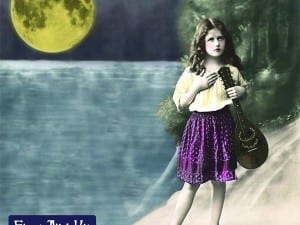“In my life, I have seen hope and despair entangled in relentless cycles, in Arab countries as well as in the rest of the world. Every sunrise brings a glimmer of hope – of a better life, a new beginning – only to vanish again when fate stubbornly repeats: ‘Not this time'”, says Abir Boukhari, co-curator of Unhealed, a group exhibition now on display at Moderna Museet Malmö, Sweden, bringing together the work of 17 artists. The show portrays existential experiences amidst major social upheaval, focusing on the aftermath of the uprising and revolutions that swept through the Arab World in 2010. These events altered the lives of millions of people, many of whom, as a consequence, were forced to relocate and now live in Sweden.

Through drawing, film, painting, photography and sculpture, Unhealed presents a display that follows a poetic narrative, rather than a strict, chronological format. A series of workshops also accompany the exhibition, on topics such as social cohesion, cultural heritage, and the possibilities of architecture as a component of creating and counteracting conflict. It’s a programme that creates an alternative space for Arab diaspora to come together, examining examines the shifting identities of artists in Algeria, Egypt, Libya, Morocco, Syria, Tunisia, and Yemen, as well as Albania, Italy, Romania, and Sweden. Throughout, viewers witness a deliberate, and specific attendance to culture, region and memory. We’re left to consider: who will be remembered in the gallery space, the history book and the archive?
In Life Could End (2021-ongoing), Libyan documentary photographer and visual poet Aya Abarghathy (b. 1999) focuses on Libyan experiences. She writes, “In Benghazi, we women cannot walk the city freely. We park the car directly in front of our destination, and if we have to walk, we are accompanied by a heavy feeling of anxiety. How did we start being confined to this narrowness? When did it become that any attempt to share the public space with the other is met with direct violence? Where are the women in the photo archive of the city?” The artist observes her relationship to the region, combining journalistic writings with documentary photographs. Her work speaks to the current humanitarian crisis and political instability in the country, following civil war between 2014 and 2020, in addition to the devastating floods in 2023. She continues, “I feel like my soul is on its toes, as if I’m waiting for something bad to happen.”

Elsewhere, viewers can experience a multimedia display through Adrian Paci’s (b. 1969) video installation Broken Words. The film presents five individuals who have fled their native Syria. Paci, who has also experienced forced migration, asked participants to share their personal experience of civil war. Whilst editing the footage, the artist focused on distinct moments where individuals paused whilst they waited for the interpreter’s translation. Paci captures these silences, collaging them together to create a series of haunting portraits. Separate to this, he edited the voice recordings of each speaker. Applying the same technique he used in the first section, he mixes the speakers’ voices, creating a composition that is a blend of their testimonies. The mix of sounds, jumbled together, avoid conveying a precise or articulate narrative. Instead, we witness something choral and performance-like. Paci explains, “My focus is how humanity creates theatrical moments to present their deepest needs.” We’re shown what it means to be forced to leave your home – a process that is traumatic and fragmentary – felt more deeply in its shared expression.
A shared voice, and community-based practice, is also utilised by by Mouna Jemal Siala (b. 1973). Her series No to Division (2013) responds to the assassination of Tunisian opposition leader Chokri Belaïd. His death prompted widespread protests amid reports of intimidation and violence against opposition groups. In response to this, Siala created a series of portraits with a common theme: a vertical line drawn down the faces of citizens in Tunis. The artist draws attention to escalating social divisions, photographing 217 individuals to mirror the number of Tunisian parliament members. Through her work, she emphasised that these subjects, truly represented the voice and essence of the country, more than any politician.

“When I first asked Abir to collaborate on this project, she was hesitant; the subject was still too much of an open wound. Now, several years later, we are about to realise this exhibition. It feels both powerful and important, particularly when considering all those directly affected who now live in Sweden,” says Joa Ljungberg, co-curator of Unhealed. Moderna Museet Malmö’s exhibition is attentive and necessary. It asks how people are affected by living in a state of war. In a world where displacement and terror continue to rage on, the show compels viewers to look beyond Western-biased portrayals of Arab conflict. There is a need, now, more than ever, to recognise and pay attention to Arab and Muslim perspectives. Here, we’re given the chance to engage with art as a means of an empowerment, as a way to listen.
Unhealed | 1 – 24 March
Image Credits:
1. Mouna Jemal Siala, From the series No to Division, 2013 Photo: © The artist
2. Aya Albarghathy , From the series Life Could End Photo: ©The artist
3. Adrian Paci, Still from video Broken words, 2019 Courtesy: The artist, Kaufmann Repetto, Mailand/New York and Peter Kilchmann, Zürich. Produced with contribution of Sant Egidio community, Rome
4. Mouna Jemal Siala, From the series No to Division, 2013 Photo:©The artist





